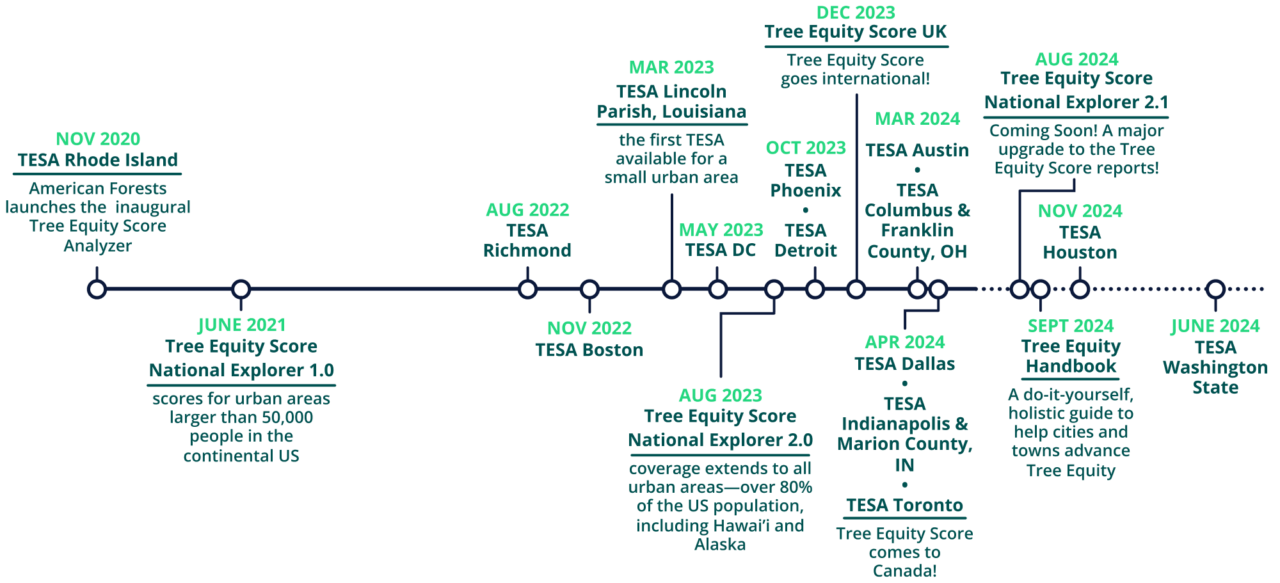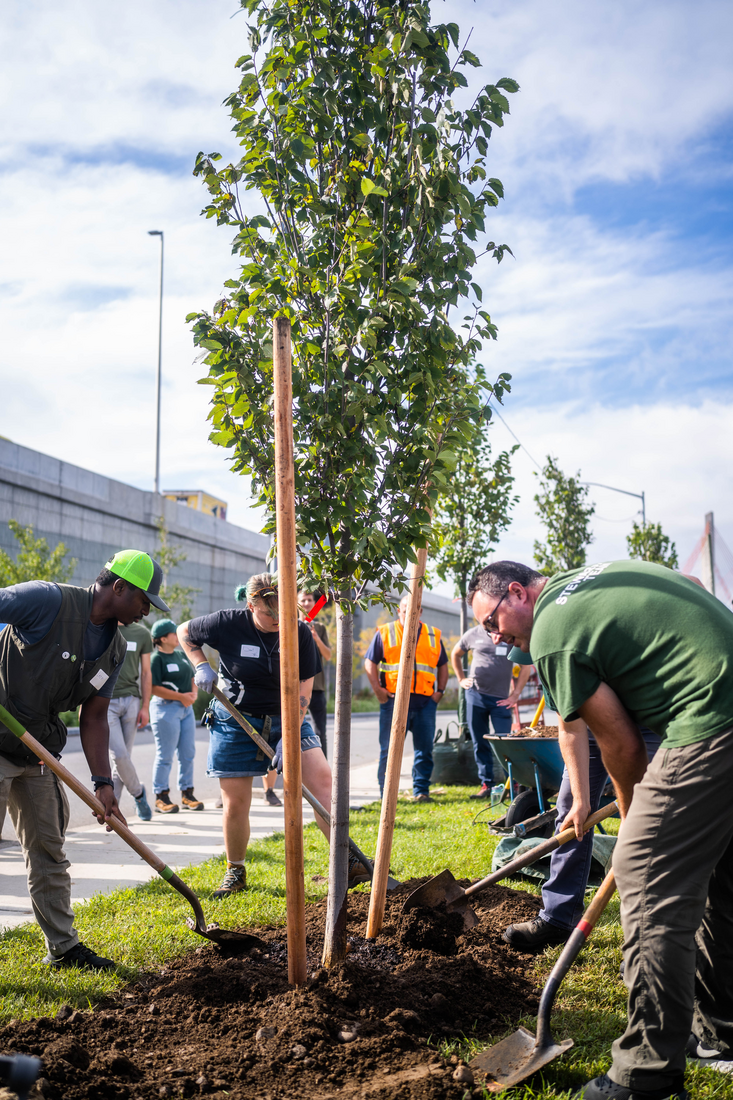Three years ago, American Forests launched Tree Equity Score. What began as a simple idea – measuring and mapping how much of a city is covered by trees and forests – has quickly taken root and grown in cities across the country and, increasingly, around the world.
Tree Equity Score, at its most basic level, is a prioritization tool. It allows users in urban areas to identify and compare neighborhoods with the greatest need for increased tree cover. Powered with this information, users can plan tree planting projects, use the maps and information in grant proposals, or make the case for investment to their public representatives.

Democratizing data and empowering anyone and everyone to identify areas where increased tree canopy is needed is important because, largely, maps of inadequate tree cover follow lines of race and income. Trees are often sparse in neighborhoods with more low-income families and people of color, due to longstanding and systemic patterns of discrimination and disinvestment.
Tree Equity matters to me. Fairness is my strongest personal value, and I’ve dedicated my career to organizations that work to advance it. And, Tree Equity matters to communities because urban trees and forests provide a host of lifesaving and life-sustaining benefits – benefits that should be available to all. I believe to my core that accessible data and information is key to unlocking the support and resources needed to achieve Tree Equity, and I’m proud to be part of an organization that shares those values.

With this knowledge comes power. The movement for Tree Equity has grown rapidly from a simple idea to a national standard used in hundreds of cities. Tree Equity Score is often described as a global model for equitable urban forestry and has inspired critical buy-in and support from corporations, foundations and the U.S. government. The Inflation Reduction Act, for example, brought $1.5 billion in new funding for urban forestry and Tree Equity, due in no small part to the impact Tree Equity Score has had on presenting the scope and scale of the challenge ahead of us.

Photo Credit: Michael Cooper
What continues to excite me, though, is that Tree Equity Score is about responding to the needs of people. The evolution of the platform over these three years has been driven by our users – the people on the ground who work every day to improve the lives of people in their communities. We have expanded coverage to smaller urban areas, added new priority measures to better hone in on inequities, and incorporated data and reporting functions that support grant proposals.

Photo Credit: NYC Parks Tree Time
There’s more on the horizon, from powerful new ways to explore the data behind Tree Equity, to new tools for expanding tree canopy in your community, to new and innovative data and design enhancements. Tree Equity Score is alive and always growing. I could not be prouder of what American Forests has been able to accomplish alongside a growing community of practitioners and advocates. We remain steadfast in our commitment to use data and tools to inspire, educate, advocate, fund, and implement Tree Equity across the country. I’m humbled and grateful to be a part of the team that serves as stewards of Tree Equity Score.
Visit TreeEquityScore.org today and explore your neighborhood or city’s score. I hope it will inspire you to consider ways you can contribute to improving Tree Equity in your community. And, please, let us know what you think – we cannot do this without you!